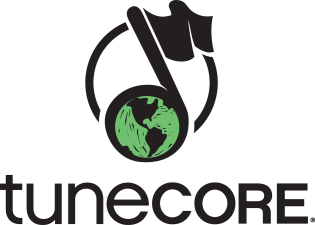Putting your music on the Internet is an important step in promoting your tracks. With the multitude of music platforms such as Apple Music, Spotify, Amazon Music and many others, it can be difficult to decide when and how to publish your creations.
There’s no perfect time to publish your music on the Internet. Nevertheless, January and February, as well as the holiday season, can be considered by many to be favorable, depending on the tracks you wish to publish. Using the services of a music distribution aggregator such as DistroKid will greatly speed up the uploading of your tracks and albums to music streaming and download platforms such as Spotify or Apple Music.
Distributing your music on the Internet is an important step in promoting your tracks. With the multitude of music platforms such as Apple Music, Spotify, Amazon Music and many others, it can be quite time-consuming to take the necessary steps to publish your tracks. That’s why it’s easier for you to use a music distribution aggregator like the one presented in this article.
The use of affiliate links in the article is intended to generate additional revenue through referrals, thus financially supporting the work of content creation.
What’s the best time of year to publish my tracks?
There’s no single ideal time to publish your music on the Internet, but some periods may prove more propitious than others. Here are a few tips:
- Avoid school vacations and major sporting or culturalevents, which could drown out the abundant supply of your tracks.
- Take direct competition into account by analyzing the releases planned by other similar artists.
- The months of January and February are considered favorable, as many people are looking for new music after the holiday season.
- If you’re targeting a summer or festival audience, spring and summer might be more suitable, as festivals and outdoor events are more frequent during this period.
- For certain music genres, such as Christmas songs or Halloween mood music, it may make sense to publish at specific times of the year that correspond to these themes.
- If you’re targeting a specific market, such as summer vacations for beach tunes or winter sports for ski songs, it would make sense to publish according to these seasons.
- Also consider seasonal trends and cultural events that might influence the listening preferences of your target audience.
- At the end of the year, during the holiday season, many people are off work and have more time to discover music, which could be a good time to publish.
- Keep in mind the times of year when music platforms run special promotions or artist showcases, as this could increase the visibility of your tracks if you publish then.
What is a music distribution aggregator?
A music distribution aggregator is a company specializing in the distribution of music content to legal streaming and download platforms. They act as intermediaries between independent artists, labels and streaming services such as Spotify, Apple Music, Amazon Music and Deezer.
An aggregator offers artists and small labels the opportunity to make their music available to a wide audience without having to conclude individual agreements with each platform. This saves substantial time and effort for music creators, who can then concentrate their resources on producing and promoting their work.
Some aggregators offer additional services, such as :
- Copyright and licensing advice
- Statistics and performance analysis on different platforms
- Pre-order and preview facilities
- SEO optimization and reading suggestions
- Promotion and marketing
Which publishing platforms can automate music publishing?
As mentioned above, some aggregators such as DistroKid, TuneCore and CD Baby offer automation options for publishing your music on various music streaming and download platforms.
Here is a non-exhaustive list of the most popular platforms supported by these three aggregators:
| Platforms | DistroKid | TuneCore | CD Baby |
|---|---|---|---|
| Spotify | ✔️ | ✔️ | ✔️ |
| Apple Music | ✔️ | ✔️ | ✔️ |
| Amazon Music | ✔️ | ✔️ | ✔️ |
| TikTok | ✔️ | ✔️ | ✔️ |
| YouTube Music | ✔️ | ✔️ | ✔️ |
| Deezer | ✔️ | ✔️ | ✔️ |
| Pandora | ✔️ | ✔️ | ✔️ |
| Tidal | ✔️ | ✔️ | ✔️ |
| Google Play Music | ✔️ | ✔️ | ✔️ |
| Napster | ✔️ | ✔️ | ✔️ |
| Yandex Music | ✔️ | ✔️ | ✔️ |
| Qobuz | ✔️ | ✔️ | ✔️ |
Note: This list includes only the most popular of the many supported platforms. For a complete list, please visit the respective websites of ” target=”_blank” rel=”noreferrer noopener”>TuneCore and
Despite the initial absence of these platforms, it’s worth noting that CD Baby now supports Boomplay and TuneCore supports Anghami, thus limiting truly exclusive options. Given the dominance of the major music streaming brands, these minor omissions are unlikely to significantly affect the overall reach of your music distribution.Ampya (closed) – Available in Austria, Germany and Switzerland, Ampya was a popular local alternative that has now disappeared.Simfy (closed) – Based in South Africa, Simfy was a music streaming service that closed in 2015.Rara (closed) – Launched in 2013, Rara was a multi-platform music streaming platform that ceased operations in 2016.Guvera (closed) – Guvera was an Australian music streaming platform that had expanded internationally but eventually went out of business in 2017.
What are the best publishing solutions on music streaming platforms?
The most popular music distribution aggregators are DistroKid, TuneCore, CD Baby, Ditto Music and Symphonic Distribution.
As each aggregator offers its own pricing conditions, packages and additional services, it’s essential to compare the options and choose the one that best suits your needs and budget (See below in the article).
Here are the three most popular:
DistroKid

DistroKid stands out for its ease of use and attractive unlimited packages. It offers an unlimited annual package, enabling you to publish as many tracks as you like! Certainly the most economical solution 🙂.
What’s more, DistroKid is known for its intuitive, easy-to-navigate interface, allowing artists to focus on their music rather than technical issues.
This service not only allows you to distribute your music to multiple platforms, but also to schedule online dates.
TuneCore

TuneCore, this platform also offers automation features and detailed tracking of your music’s statistics
This information can be useful for developing marketing and promotional strategies. TuneCore has a transparent business model, charging a fixed fee per album or single released, without taking a commission on revenues generated by the artist’s music.
It differs from DistroKid in that its business model is based on a fixed fee per album or single released, albeit a more expensive one.
CD Baby

Finally, CD Baby offers a variety of complementary services that go beyond simple music distribution. For example, they offer video synchronization services, enabling artists to earn money by authorizing the use of their music in videos, which can be very lucrative if one of your tracks creates a buzz!
In addition, CD Baby offers merchandising options, enabling artists to sell merchandise directly to their fans. Their pricing flexibility, withmonthly subscription options, also makes this service attractive to a variety of artists.
In addition to distributing your music, this aggregator gives you access to ancillary services such as video synchronization, merchandising and ISRC recording, as well as a monthly subscription system.
How much does it cost to publish music on the Internet?
Prices vary according to the service provider chosen and the type of package subscribed to. Some charge commissions on revenues generated, while others prefer flat-rate pricing. Here’s an overview of the costs associated with the main aggregators mentioned above:
- DistroKid : From $19.99 a year for an unlimited number of singles or albums (or $1.90/month).
- ” target=”_blank” rel=”noreferrer noopener”>CD Baby: between $9.95 and $49 per album, depending on the desired validity period (from 1 year to lifetime); between $4.95 and $19.95 per single.
What’s the most economical way to publish my music?
Between DistroKid, CD Baby and TuneCore, the choice of the most economical solution may depend on various factors, such as the number of songs you plan to publish, the frequency with which you publish music, and whether you prefer to pay for each publication or via an annual subscription.
- DistroKid is often highlighted for its single annual fee, which allows unlimited downloads. This makes it particularly cost-effective for artists who plan to release several tracks or albums throughout the year. DistroKid takes no commission on music sales or streams.
- CD Baby, on the other hand, charges per album or single. It also charges a 9% commission on your earnings, which can represent a considerable amount if you’re hoping to generate significant sales.
- TuneCore charges annually for each album downloaded, which may be less economical for artists who release a lot of music, but can be advantageous for well-established artists who release few records.
Looking at the pricing structure, DistroKid appears to be the most economical option for artists who release music regularly, due to its flat annual fee and lack of commission charges.
However, for artists who release music less frequently, the one-off CD Baby fee per album plus a commission on sales might be acceptable. TuneCore could be an option for those who release less music and are looking for a service tailored to more established artists.
Don’t forget to consider additional features and the specific needs of your music distribution to determine the best value for you. Each service has its own advantages, and some may offer additional promotional tools or distribution options that may be worth the extra cost.
How long does it take for these platforms to publish my music?
Once you’ve uploaded your music to these platforms, the time it takes to make it available to the public can vary. Typically, it takes between one and two weeks for your music to appear on major music platforms such as Apple Music, Spotify and Amazon Music.
Here’s a closer look at the average times taken by DistroKid, TuneCore and CD Baby:
- DistroKid: According to their website, most releases are processed and sent to digital stores within 24 hours of download. However, it takes around five working days for your content to be visible on Spotify and up to a week for Apple Music. Please note that exceptional technical problems may extend these timescales.
- TuneCore: According to information provided by TuneCore, they generally carry out a manual review of all new submissions to ensure compliance with store requirements. This process can take up to seven working days. Therefore, expect your music to become available after about ten business days.
- CD Baby: At CD Baby, the estimated time for distribution of your music to stores is between four and six weeks. While this may seem like a long time compared to DistroKid and TuneCore, please note that it also includes administrative and financial processing time for royalties.
Bear in mind that these times are indicative and may fluctuate depending on factors such as the workload of quality assurance teams or the constraints imposed by third-party platforms. In any case, be patient and start planning your promotion campaign once you’ve submitted your music to the aggregator of your choice.
How many users and tracks are there on streaming platforms?
The most popular and widely used music streaming platforms are Spotify, Apple Music, Amazon Music, YouTube Music and Deezer.
Let’s take a closer look at the number of users and the number of songs available on each of these platforms.
| Platforms | Monthly active users | Songs available |
|---|---|---|
| Spotify | Approx. 345 million (March 2021 quarterly figures) | Over 70 million |
| Apple Music | Approx. 78 million (June 2020 figures) | More than 75 million |
| Amazon Music | No official figures published, we assume there are over 55 million paying Prime subscribers (free access to Amazon Music) | More than 70 million |
| YouTube Music | Around 30 million (February 2020 estimate) | More than 60 million |
| Deezer | Approx. 16 million (first-quarter 2021 figures) | More than 73 million |
What are the pitfalls to avoid when publishing my music?
To maximize your success when publishing your music online, it’s essential to avoid certain common mistakes:
- Publishing too often: It’s important to maintain a regular publishing rhythm without inundating your listeners with new music all the time. An overabundance of content can lead to disinterest on the part of your audience. What’s more, each new release deserves special attention when it comes to promotion.
- Neglecting marketing: Promoting your music is just as crucial as creating it. Use social networks to share excerpts, clips or stories about your tracks. Also consider integrating your music into collaborative playlists on platforms like Spotify to increase its visibility. Make Canvas for Spotify to make your music even more attractive. Don’t hesitate to collaborate with other artists or influencers to reach a wider audience.
- Incorrectly entered metadata: Metadata is the information associated with your track (title, artist, genre, cover art, credits…). They are essential for referencing your music on the various platforms. So make sure you fill them in correctly and accurately. The cover art must be of good quality and respect the requested sizes. Take a look at this tutorial on how to make Cover Art with AI. Finally, don’t forget to credit all participants in the track.
Make text files containing all the metadata corresponding to your tracks (Title, Album name, Album cover, Title number, Musical genre, Credits, etc). This way, you’ll avoid the risk of having different information when you put your tracks online, and you won’t have to copy and paste the information.
Is it possible to find out what time my music is published?
No 😕, unfortunately it’s generally not possible to know the exact time your music will be published on streaming platforms (such as Apple Music, Spotify, Amazon Music and others). These platforms tend to group new releases together by day or week and upload them at random intervals during that period.
This means that even if you receive a notification confirming the availability of your music on a particular platform, it may not appear immediately in searches or recommendations. Each platform’s algorithm processes and ranks new content in the background, then gradually displays it to end users.
Although you can’t influence the publication schedule, you can actively monitor the presence of your music on each platform. Log in regularly to your distributor accounts (e.g. DistroKid, TuneCore or CD Baby) as well as to the dashboards provided by streaming platforms (Spotify for Artists, Apple Music for Artists, etc.) to get up-to-date information on the availability of your content.
Overall, focus more on planning your promotional campaign and engaging with your audience rather than on the precise time your music is released. Create buzz around your releases by using social networks, newsletters and other communication channels to engage your fans and encourage listening to your new tracks.
Conclusion
Publishing your music on the Internet can seem daunting at first, but by choosing the right time of year, using appropriate automation tools and avoiding some common mistakes, you can optimize your chances of success. Always keep in mind that consistency, strategic planning and proper promotion will play a vital role in the visibility and discovery of your music.
Don’t be afraid to explore different platforms and methods to find the one that best suits your specific needs. Experiment with services such as DistroKid, TuneCore or CD Baby, and take advantage of their varied features to streamline the publishing process and reach a wider audience.
Finally, remember that building an audience takes time and patience. Keep working hard on your music, learn from feedback and persevere despite potential challenges. With the right tools and a strategic approach, you’ll be well on your way to sharing your work with the world.

